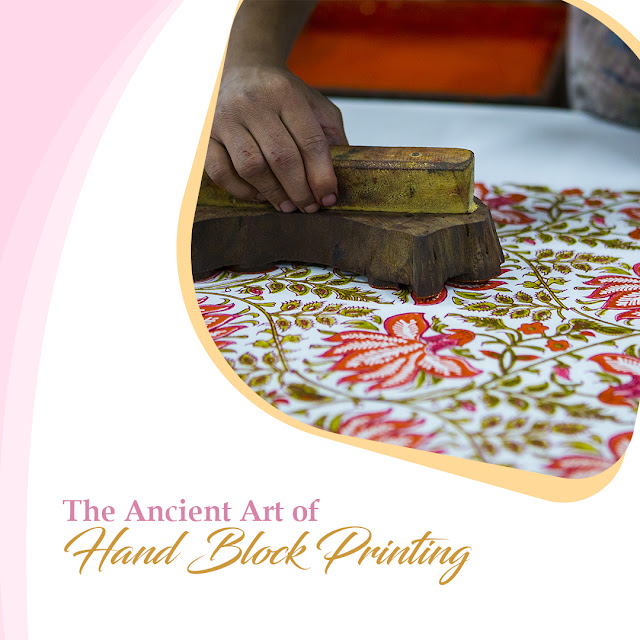The Ancient Art of Hand Block Printing
The
ancient art of Hand Block Printing has been practiced for
hundreds of years in India. A procedure that requires steady movement and
cautious hand-eye coordination, this fabric printing method involve using carved
wooden blocks dipped in dye to remake suitable designs.
Block-printed
fabrics usually showcase a palette of colors that bring these designs to life.
Block
printing is stated to have originated in China. However, in present-day India,
Bagru in Rajasthan is a key hub of hand block printing. Some Hand
Block Print Fabric Manufacturers use
fruits or vegetable-made ink for printing and make their product fully organic.
Let's have
a different look at the technical Block Printing Process.
Carving
The Design
A master
block maker traces the selected layout onto a woodblock, commonly a teak
product, a deciduous hardwood tree native to India. The woodblock is oiled and
sanded before the craftsman carefully chips away at the block, leaving the
stamp's desired design in the back. In traditional block printing, the layout
itself is most customarily a conventional Indian motif that's generally
prompted by using the region's nature, beliefs, and customs. These motifs
frequently take the form of geometric patterns, animals, or vegetation.
Dying
Base Cotton Fabric
The Main
cloth may be white or a coloration. The mill that produces the organic cotton
material dyes and prepares the base fabric to be block published. Colored
Fabrics are more highly-priced because of the more dyeing steps. They're
usually dyed through a reactive dye manner.
Finding
Perfect Shade
For each
Passion Lilie series and design, we create a shade palette. We use the widely
wide-spread Pantone colorings as a reference. The natural dyes are available in
a few different base shades. These colorings are cautiously blended
collectively to suit the preferred Pantone shade.
Preparing
The Fabric
The cloth
is laid flat on a table and stuck firmly to the desk with pins. Although
miniature versions inside the printing make Indian Block
Print Fabric unique, a single
unwanted motion can result in streaks or choppy printing that imply beginning
another time.
A unique
wood desk is used for block printing. The desk is generally 6 meters in
duration, by 50 inches extensive, and has as a minimum ten layers of jute
material, a blanket layer, and a thick cotton sheet at the pinnacle that is
tightly tucked in from all aspects of the desk. All of these layers assist the
block print in taking and print onto the cloth properly.
Printing
Once the
colors are combined, the grasp block printer pours the dyes onto a rolling dye
tray. The tray has numerous layers of gauze cloth. The form of block- delicate
and light or heavy and full of shade, determines the number of layers of gauze
needed for the dye to spread all over the print part of the block correctly.
The block
print is then dipped in dye and firmly stamped with the aid of a hand onto the
fabric. This calls for a positive amount of force, regularly done either with
the support of hitting the stamp with the assistance of a hand or with the aid
of a hammer. If the design consists of multiple colors, each is applied with
its block after the previous paint has dried—the more hues in a garment, the
more time-consuming and hence expensive the cloth.
Washing
and Curing
Once the
dye has dried, the finished block revealed cloth is sent for washing and
curing. The material is washed by using hand using a sustainable water source
and hung to dry in the solar. Just as the technique of washing reduces water
consumption, this sustainable approach of drying the fabric minimizes strength
consumption for a smaller environmental footprint than many synthetic
procedures. Once the material has dried, it is despatched for curing.
Good hand
block printing calls for talent and plenty of exercises to create uniformity
and clean block printing patterns. Even for grasp block printers, tiny versions
within the manner are part of what offers Indian block print fabric a unique
attraction. Sometimes those versions are the handiest manner to inform the
difference between display screen printed and block published material.
Block-Printed
Clothes are excellent in all types of uses, whether it is in your house or on
your kid's shoulders. You can Try, Shivalaya Jaipur; they offer organic Hand Block Printed
Clothing for almost every use and wear.




Comments
Post a Comment